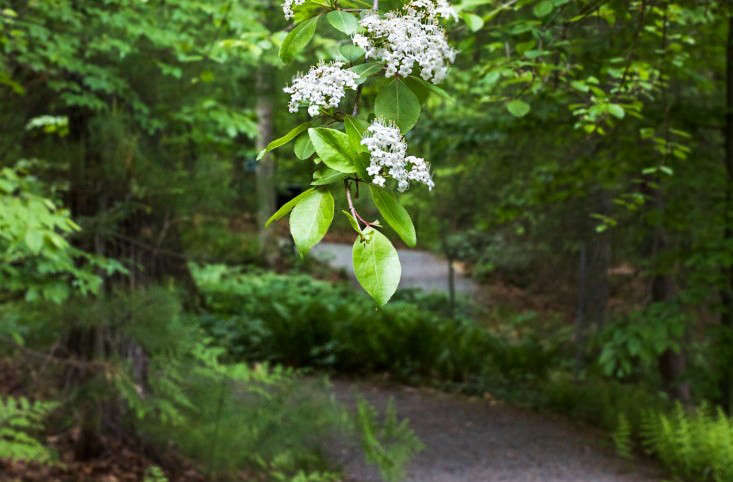
Walk on the Wild Side: A New England Woodland Garden - Gardenista
Founded in 1900, the New England Wild Flower Society is the nation’s oldest organization dedicated to the conservation of native plants. Today the society manages eight sanctuaries in four New England states, including its headquarters at Garden in the Woods near Boston. Photography by Justine Hand for Gardenista. Just 20 miles from Boston, Garden in the Woods is on the former property of noted botanist and collector William Curtis, who gave his property, along with his collection of nearly 2,000 native plant species, to The New England Wild Flower Society in 1965. Happily for me, my visit coincided with the height of trillium season, one of my favorite shade-loving woodland plants. Unlike hybrid plants that are bred for the bloom alone native species feature more texture and variety in their leaves as seen in this mixture of... ...hairy Solomon s seal Polygonatum pubescens foamflower Tiarella and wild blue phlox Phlox divaricata at the edge of the stone steps leading into the Curtis Woodland Garden At Garden in the Woods 25 staff members are assisted by more than 700 volunteers, one of whom directed me to a demure pink Lady’s Slipper (Cypripedium acaule) hidden beneath an oak. As noted on the Society s website the garden s small army of native plant champions monitor and protect rare and endangered plants collect and preserve seeds to ensure biological diversity detect... ...and control invasive species conduct research and conduct a range of educational programs Volunteers also update the large board at the garden s entrance with pictures of what s currently in bloom Though not as dramatic as some of the garden’s other specimens, Canada beadruby (Maianthemum canadense) in bloom makes a striking carpet along this wooded path. The collection at Garden in the Woods is proof that going native need not be boring. Much more lithe than its pungent cousin, wild hyacinth (Camassia quamash) has long stems and striking purple blooms which sway among the grasses. Made of fallen logs and twigs, W. Gary Smith’s “Hidden Valley” sculpture winds through a grove of beech trees. In the wetlands area, a snowy spray of Bishop’s Cap (Mitella diphylla) stands tall among the ferns and skunk cabbages. You may not expect to find lupine among the rare plants in a New England garden, but the ubiquitous purple flowers that dot the highways of Maine are of the non-native variety (Lupinus polyphyllus). Native wild lupine (Lupinus perennis) is in decline in New England (and no longer exists at all in Maine), which is particularly concerning because it is the primary or only food source for the caterpillars of many endangered butterflies, including the Karner Blue. Viburnum prunifolium, smooth blackhaw, in the Rare Plant Garden. With their textured foliage and demure blooms, many smaller natives, such as this spotted pink cranesbill (Geranium maculatum), make excellent border plants. There are three recognized varieties of yellow Lady’s Slipper (Cypripedium parviflorum) in New England. The bright blue blossoms and variegated leaves of spreading Jacob’s ladder (Polemonium reptans) add texture and color to the undergrowth. This time of year, visitors to Garden in the Woods are greeted by a soft mix of running foamflower (Tiarella cordifolia), ferns, and creeping phlox (Phlox stolonifera). The easy hike through the New England Wild Flower Society’s Garden headquarters is inspiring for any gardener. As part of its conservation mission, the New England Wild Flower Society also operates Nasami Farm Nursery in Western, MA, which propigates native New England species for the retail trade. Unlike its shy Trillium cernuum cousins, which hide under their leaves, Barksdale’s trillium (Trillium sulcatum) stands tall. Wild bleeding hearts (Dicentra eximia) and eastern bluestar (Amsonia tabernaemontana) line a dappled path. Wild calla (Calla palustris) spread along the boggy ground of the wetlands area. A lone beauty: a double white wake-robin (Trillium grandiflorum multiplex) takes shelter under a Celandine poppy (Stylophorum diphyllum). 
